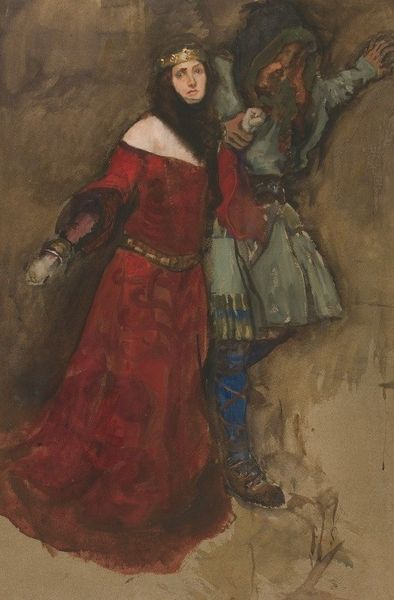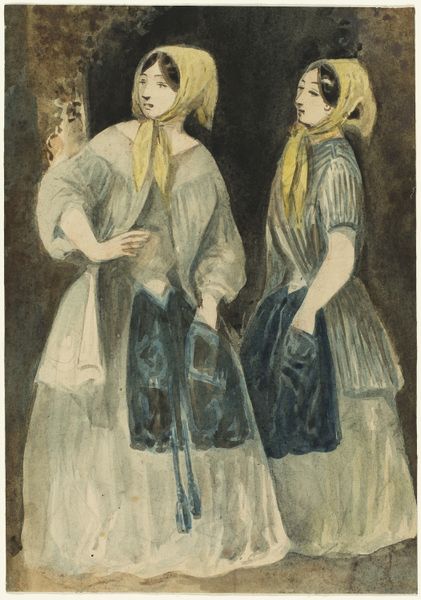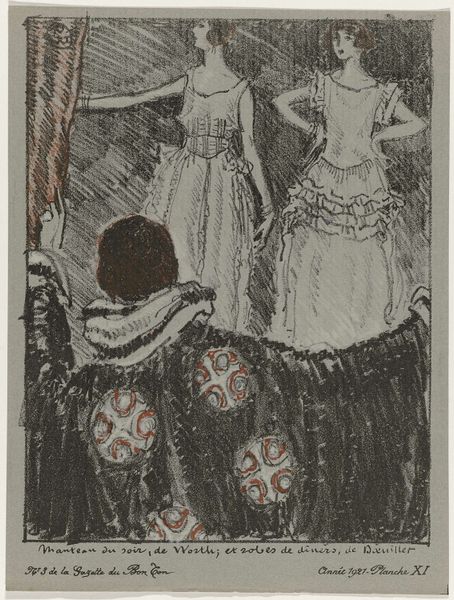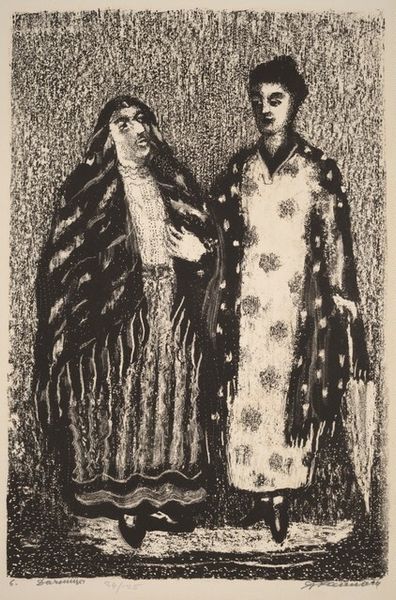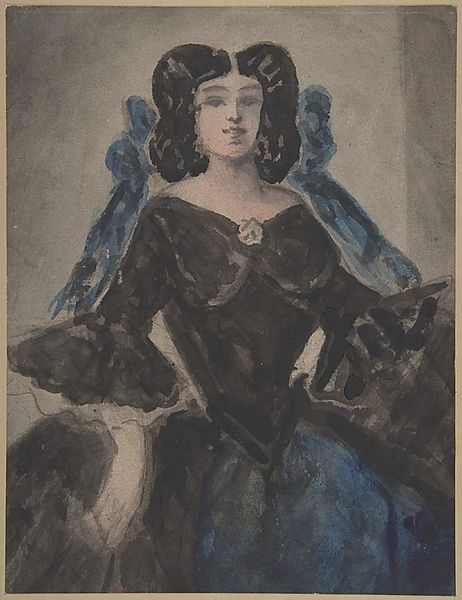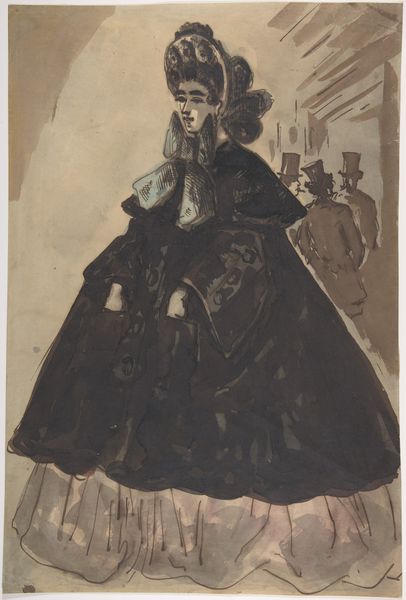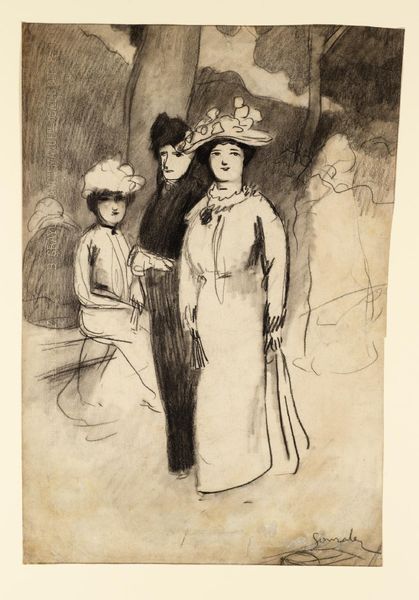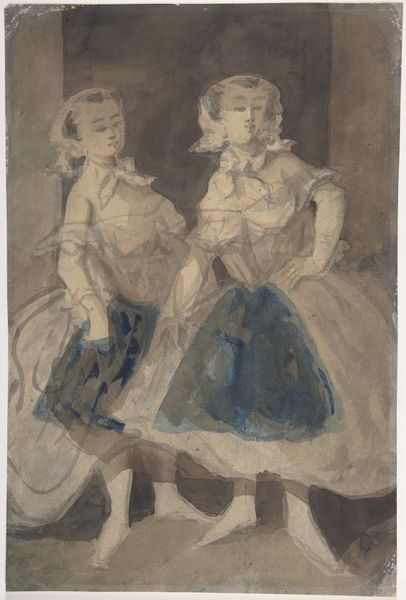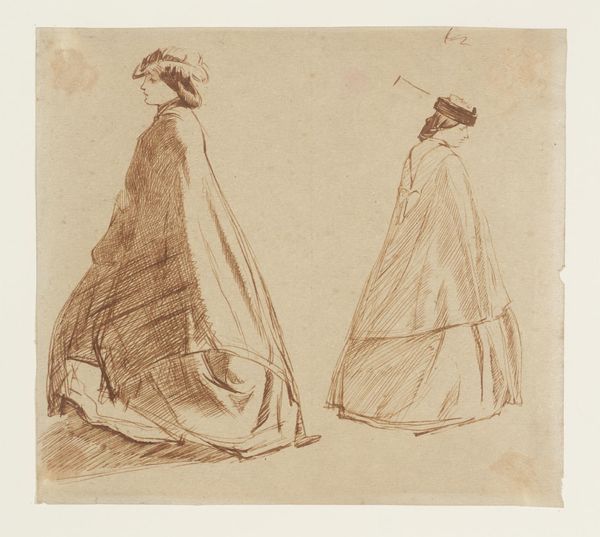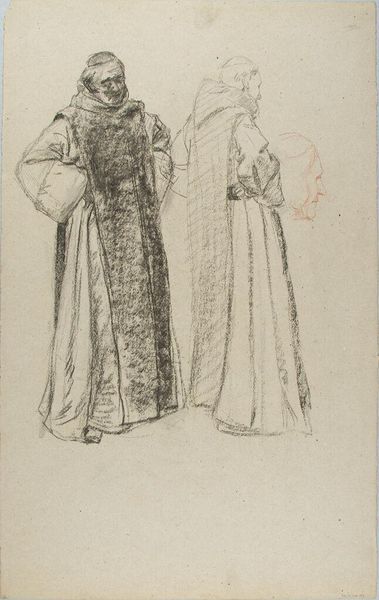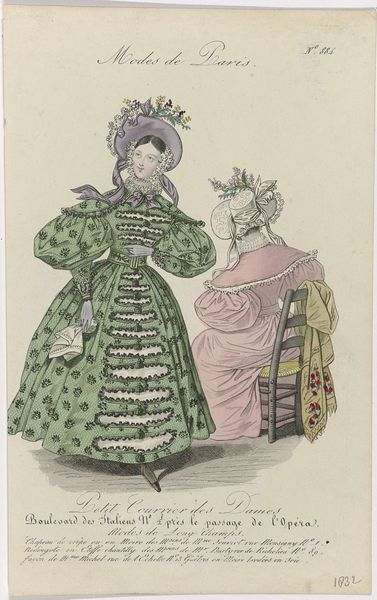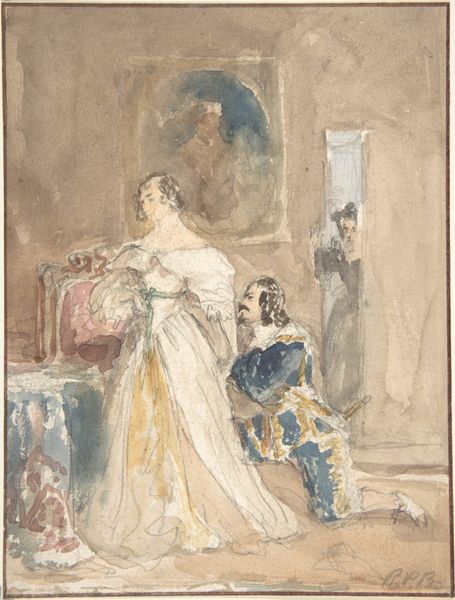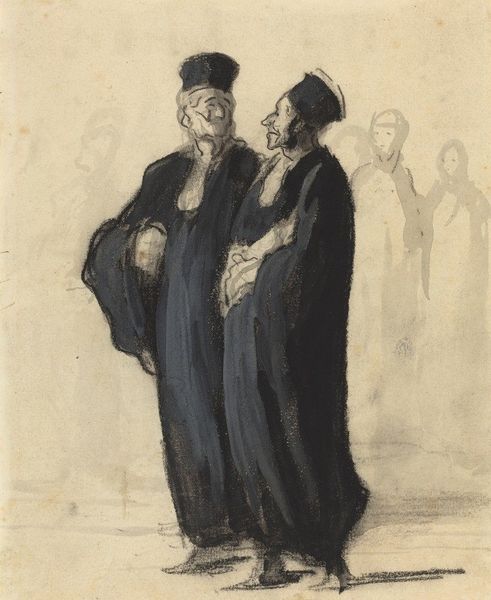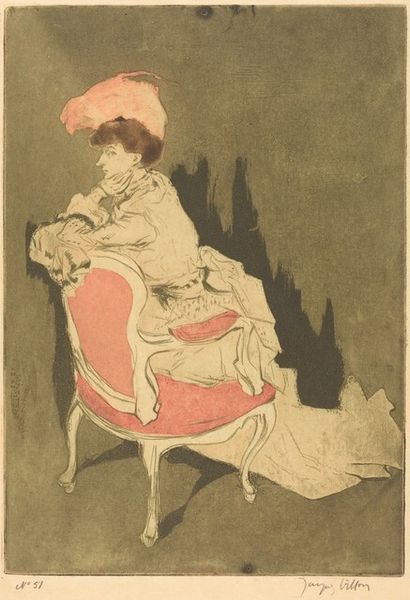
#
imaginative character sketch
#
toned paper
#
light pencil work
#
pencil sketch
#
personal sketchbook
#
character sketch
#
underpainting
#
portrait drawing
#
watercolour illustration
#
fantasy sketch
Copyright: Public domain
Curator: Here we have Constantin Guys’ work, titled "Two Women with Fans," executed as a watercolor and pencil sketch on toned paper. There is something ethereal in the artist’s handling of light. What do you make of it? Editor: My first impression is the subtle vulnerability of these women despite their elaborate finery. They seem almost tentative, caught in a moment of transition. There's a certain socio-political undercurrent—who were these women, really? What constraints were imposed upon them by society? Curator: Note how their attire – the large bonnets and bows – almost become like symbolic shields. The artist might have intended to show us a different perspective on feminine strength during the Victorian era, not the idealized beauty that was customary at the time. The accessories could represent this silent armor of imposed norms. Editor: Absolutely, there is a certain theatricality, yet it seems to serve a function, perhaps offering a mode of silent protest against prescribed identities. Looking closely, notice the detailed rendering of their gowns compared to the suggestive absence of distinct facial expressions. Could Guys be implying the relative insignificance of women beyond what they are wearing? Curator: An astute observation. By obscuring individuality, while emphasizing societal status through dress, Guys perhaps hints at how society defined women by material possessions and imposed conformity. Yet, the light pencil work leaves their identities somewhat elusive. The tonal palette itself evokes an ephemeral quality – perhaps he is asking, what legacy or meaning will exist after fashion and finery fades away? Editor: Indeed, a crucial question in terms of lasting representation. Also, I find myself wondering about the politics inherent in viewing this sketch – by observing, and thereby consuming this artwork, how are we implicated within the structures of historical representation that continue to inform how gender operates in our own time? Curator: An uncomfortable yet crucial reflection. It calls into question our present biases while prompting an acknowledgement that Constantin Guys' intention, filtered through time, invites constant questioning. His composition captures this idea. Editor: So, by examining historical portrayals, we start reflecting upon our ongoing engagement in constructing identities. And ultimately perhaps, interrogating, subverting and decolonizing these symbols of assigned value. Thank you, this has offered a refreshing view into this portrayal!
Comments
No comments
Be the first to comment and join the conversation on the ultimate creative platform.
